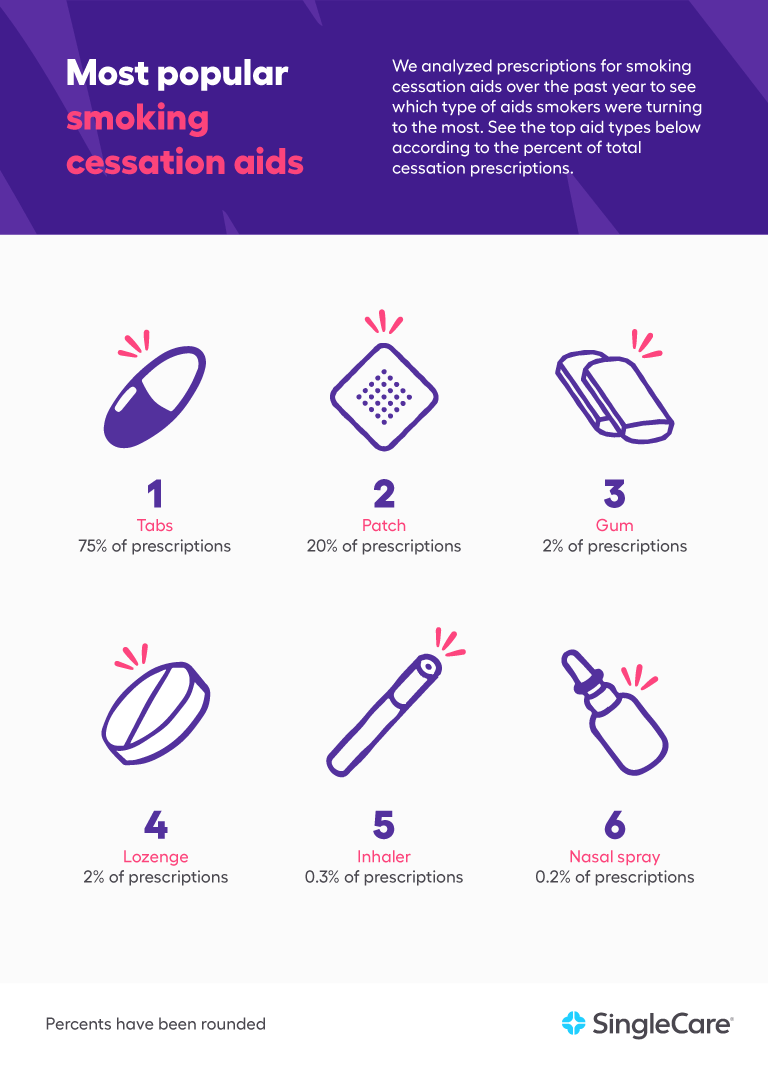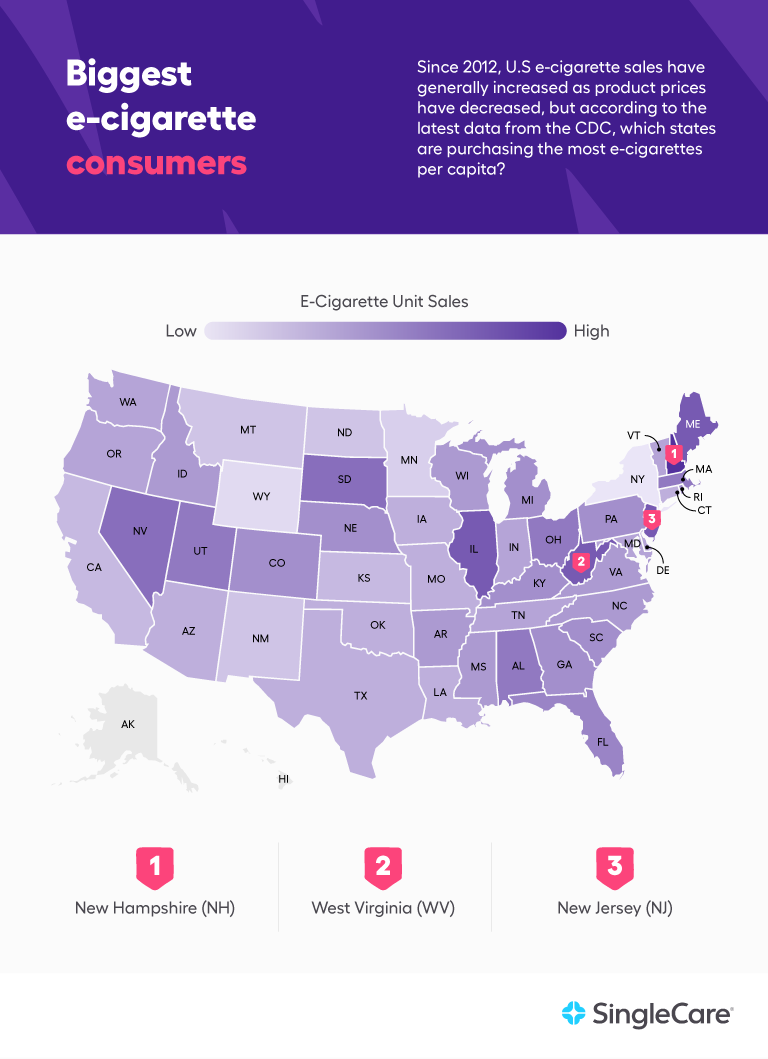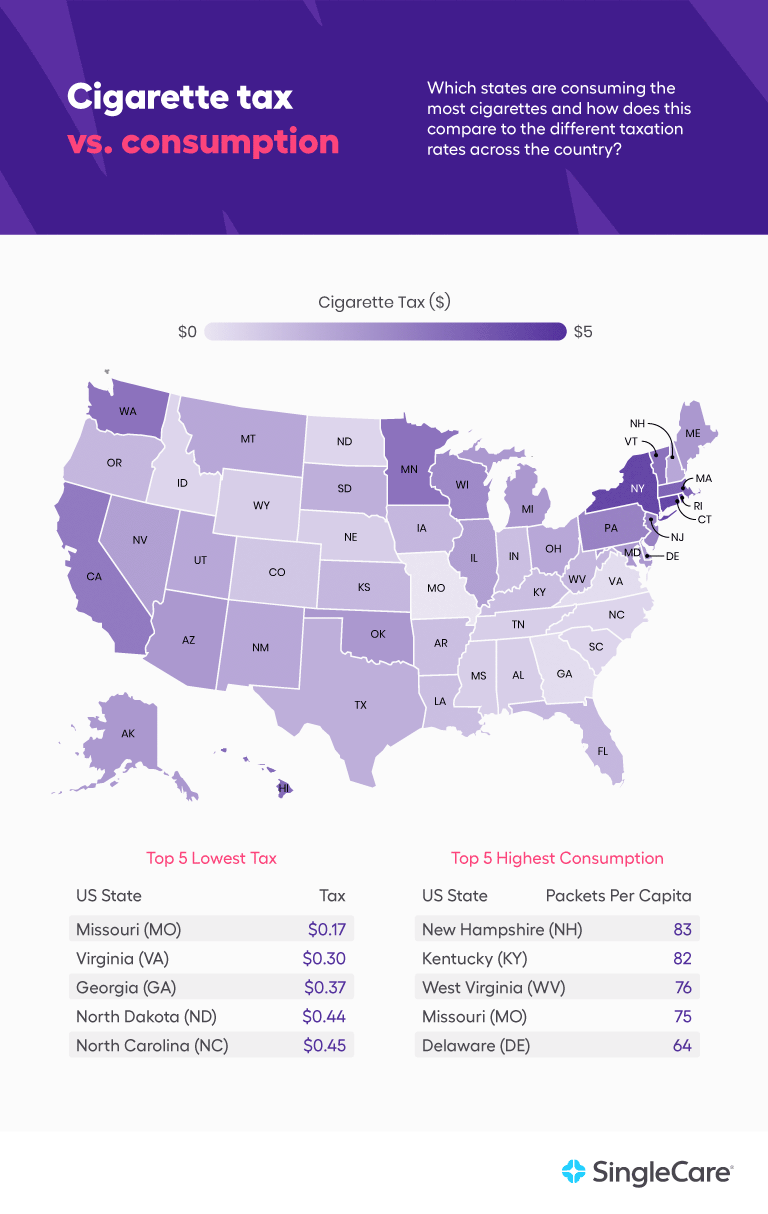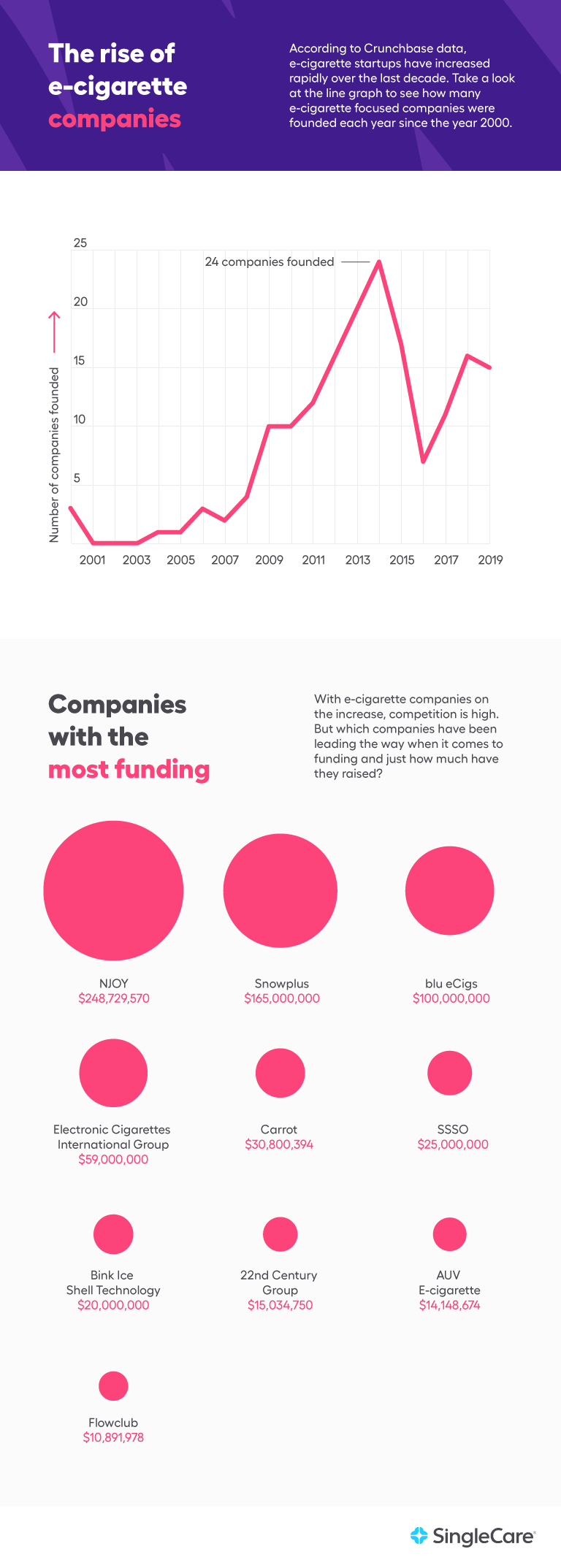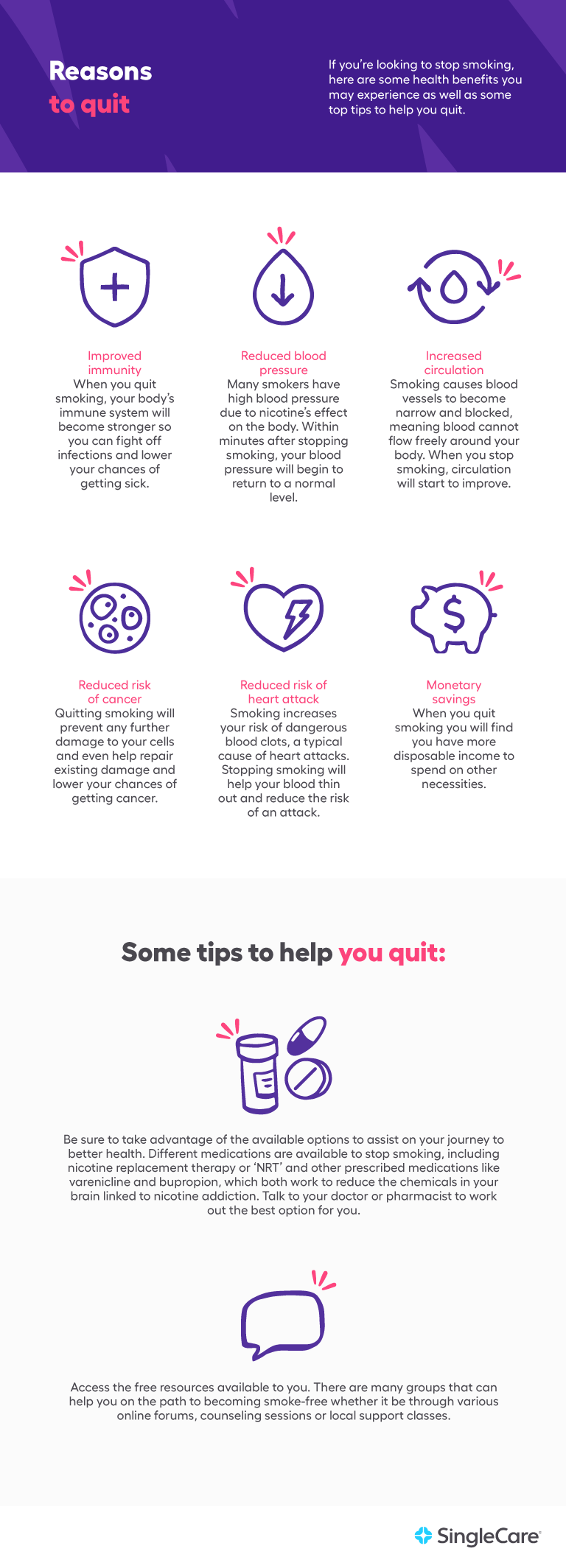Key takeaways
Despite efforts like taxes, bans, and health warnings, 34.2 million adults in the U.S. still smoke cigarettes.
Texas leads in the number of prescriptions for smoking cessation aids. Tablets, patches, and gum are the most popular types of smoking cessation aids.
New Hampshire has the highest e-cigarette consumption and is also notable for high traditional cigarette consumption with relatively low tax.
High taxes on cigarettes, like those in the District of Columbia and New York, correlate with lower consumption rates.
Despite additional taxes, restrictions, bans, and health warnings, an estimated 34.2 million adults smoke cigarettes in the U.S. We’ve analyzed data to reveal the true state of smoking in the United States. Here, we explore the correlation between tax rates and cigarette consumption, the rise of e-cigarettes, and the percentage of prescriptions for smoking cessation aids by state.
Nicotine is highly addictive, and it can be incredibly hard to quit. However, there are many smoking cessation aids that can help, including lozenges, inhalers, gum, patches, and medication. Although quitting smoking can be challenging, there is support available.
By analyzing prescriptions for smoking cessation aids over the past year, we can see that the top three aids are tabs, which account for 75% of quit smoking prescriptions, followed by patches, which account for 20%, and gum, which accounts for 2%. The graphic below further breaks down the most popular smoking cessation aids.
Based on the number of prescriptions for smoking cessation, Texas is the state that appears to quit the most with 10.5%, followed by Florida, North Carolina, and Georgia. Maryland is the state with the least prescriptions for smoking cessation, closely followed by Alabama and Michigan.
The graphic below reveals the top 20 states trying to quit the habit the most.
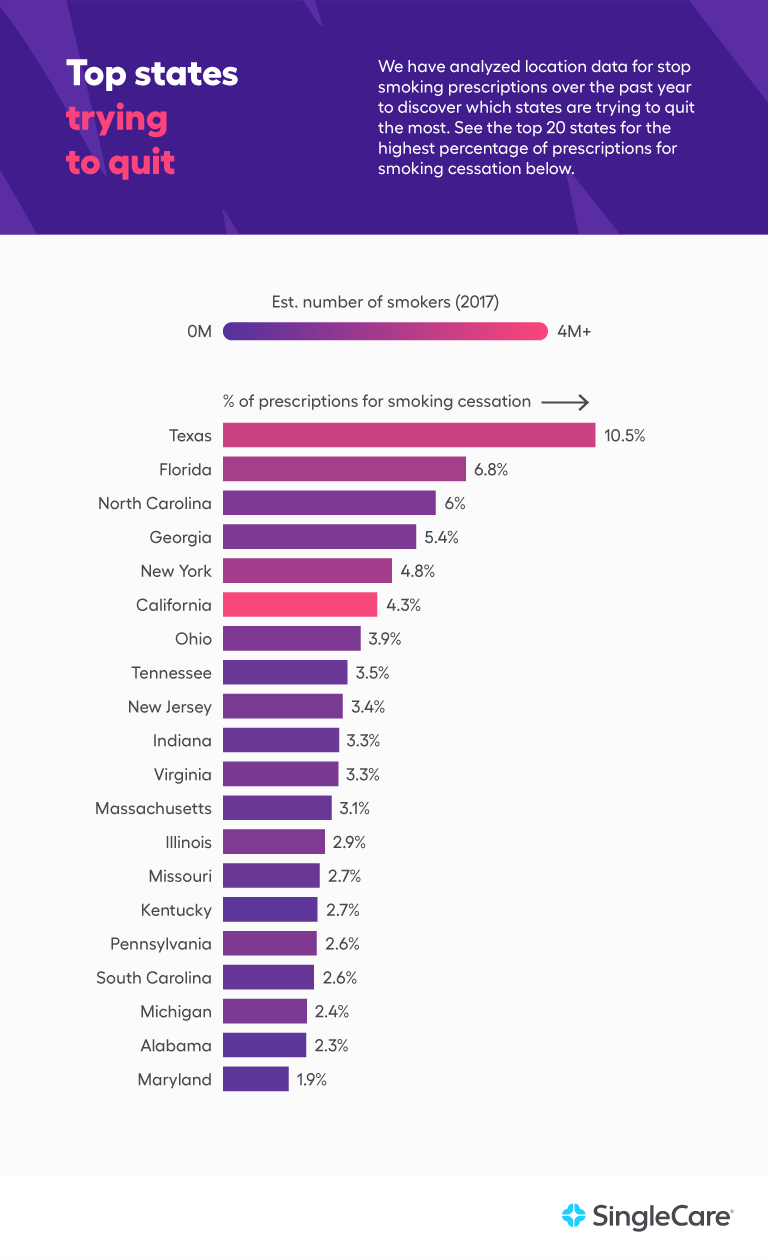 E-cigarettes have become a popular way to try and quit smoking and reduce nicotine intake, with a range of flavors and nicotine levels available to consumers.
E-cigarettes have become a popular way to try and quit smoking and reduce nicotine intake, with a range of flavors and nicotine levels available to consumers.
When it comes to the states in the U.S. with the highest consumption of e-cigarettes, New Hampshire has the highest rates, followed by West Virginia and New Jersey.
We also explored the tax on a packet of cigarettes per state to the number of packets purchased on average per person per state, to compare and explore the impact that cigarette tax could be having on consumption in each state.
The research reveals that New Hampshire is the No. 1 state for cigarette consumption; with 83.4 packets consumed per capita with a tax of $1.78, the state sits just underneath the tax average of $1.79. The state in second place for consumption with 81.6 packets per capita with the 16th lowest tax on packets of $1.10 is Kentucky. Finally, Missouri was revealed to be the 4th highest state for cigarette consumption as well as being the No. 1 state for the lowest tax of $0.17.
Interestingly, the data revealed that the District of Columbia has the highest tax rate with the second-lowest consumption, highlighting that there could be a correlation between consumption and tax. This is also shown in the state of New York, which has the lowest consumption of all the states (12.5) and has the third-highest tax cost.
Invented in 2003, vaping has become a popular alternative to cigarettes. E-cigarette startups have increased rapidly over the past decade with the number of companies hitting its peak in 2014 with a total of 24 new e-cigarette companies.
Competition is high when it comes to e-cigarette sales, with leading company NJOY making $248 million. NJOY was founded in 2007 and was one of the first major e-cigarette brands in the U.S. Following NJOY as the second-highest funded e-cigarette brand is Snowplus, who has made $165 million and was founded more recently in April 2019.
It’s clear there’s a lot of money to be made through e-cigarettes, but when did the industry peak? Take a look below to find out which companies are leading the way.
Ramzi Yacoub, SingleCare Chief Pharmacy Officer comments:
“Nicotine is the primary substance in tobacco which causes addiction and can also lead to withdrawal symptoms, as your body becomes dependent on it over time.
When you try to quit smoking, you may have symptoms of nicotine withdrawal because your body is dependent on the effects of nicotine. Common symptoms of nicotine withdrawal include irritability, anxiety, trouble sleeping, and increased appetite.
Some of the health benefits of quitting smoking include – improving your circulation, lowering your blood pressure and heart rate, increasing oxygen levels and lung function.
If you are looking to quit, but you aren’t sure where to start, here are some tips to help you along the way:
- Find the right smoking cessation product for you. Treatments can include nicotine replacement therapy such as gum, lozenges or patches or non-nicotine smoking cessations drugs which are oral prescription medications that do not contain nicotine but reduce withdrawal symptoms. Talk with your doctor or pharmacist to find the right treatment for you.
- Explore all of your options. If cessation drugs aren’t for you, there are alternatives such as group therapy sessions and non-pharmacological approaches you can explore as well.
- Check the side effects for any drug you are looking to take. Speak with your doctor or healthcare provider about the risks or side effects for your prescription. Remember that the health benefits of quitting smoking may outweigh any of the risks of taking these medications.
- Price check for prescription savings. While most insurance plans cover smoking cessation drugs, prescription savings services, like SingleCare, can be less expensive than your insurance co-pay. If you don’t have insurance, using services like SingleCare can help you save up to 80% on medications.
You can find more information on the different types of smoking cessation drugs available here.”





